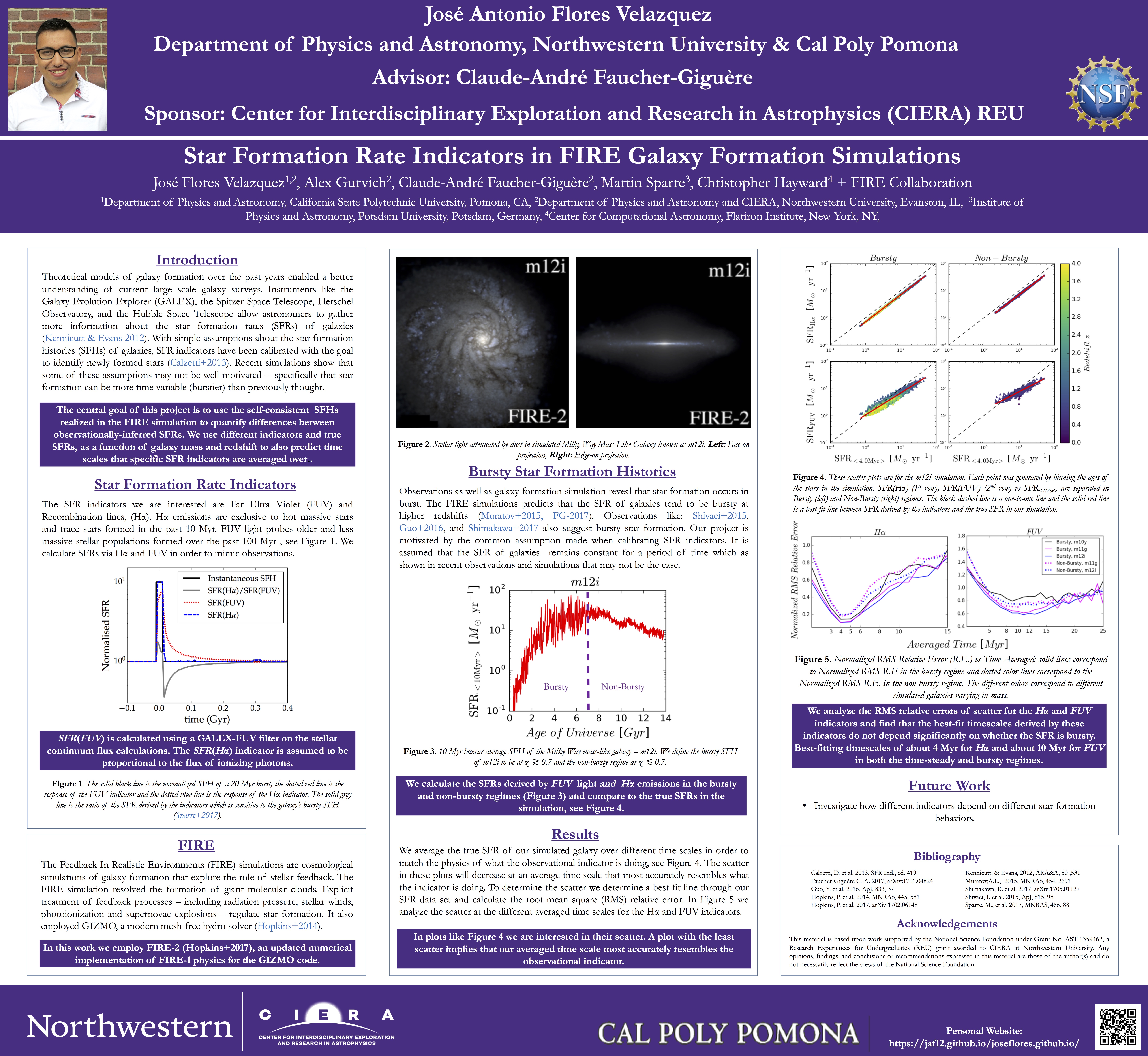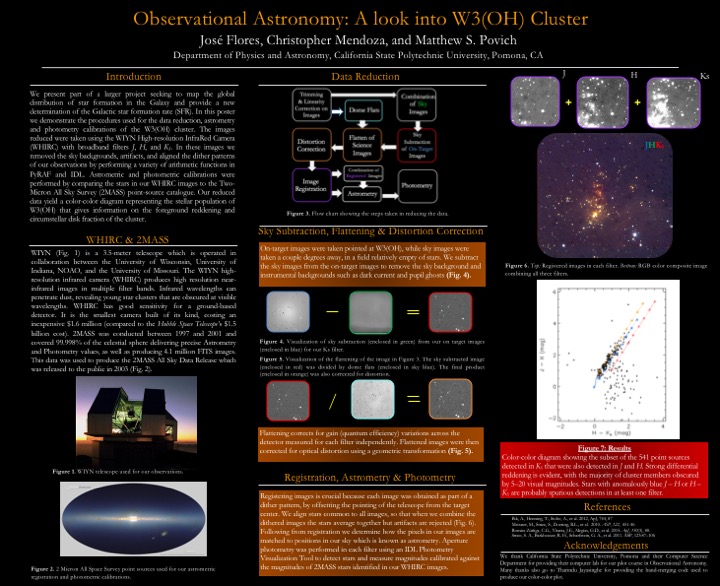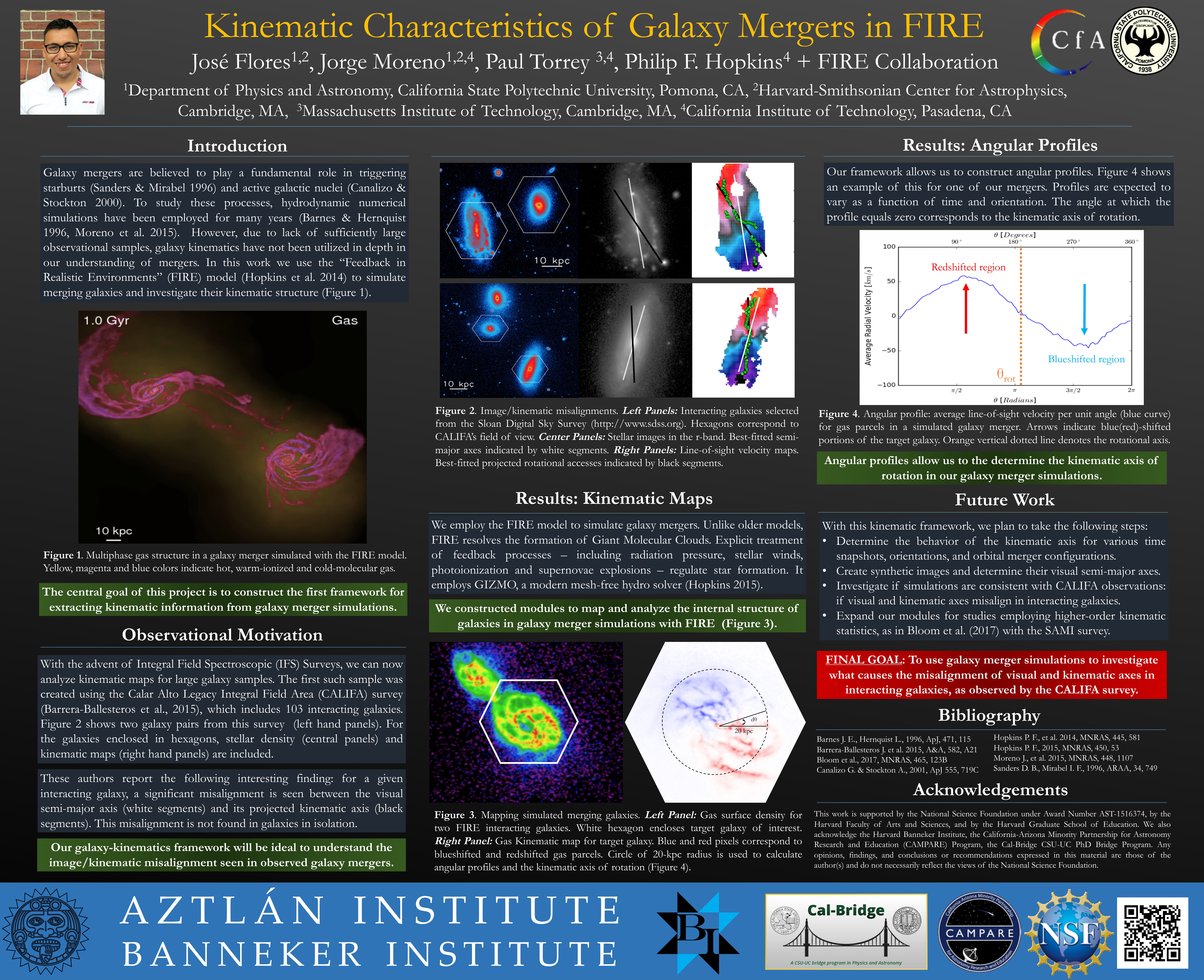CIERA-REU at Northwestern University: Summer 2017
We use galaxy formation simulations from the Feedback In Realistic Environments (FIRE) project , which in some regimes predict (time variable) bursty SFRs, to analyze the timescales probed by H-alpha and far ultraviolet (FUV) SFR indicators. We quantify the possible dependence of SFR indicators on SFR variability. Preliminary results based on a Milky Way-mass galaxy simulation indicate that the best-fit timescales probed by these indicators do not depend significantly on whether the SFR is bursty, with best- fitting timescales of about 4 Myr for H-alpha and about 10 Myr for FUV in both the time-steady and bursty regimes
CLICK FOR ENLARGEMENT
Observational Astronomy Course: Spring 2017
We demonstrate the procedures used for the data reduction, astrometry and photometry calibrations of the W3(OH) cluster. Images reduced were taken using the WIYN High-resolution InfraRed Camera (WHIRC) with broadband filters: J, H, and Ks. We removed the sky noise, visual artifacts, and aligned the dither patterns of our images by performing a variety of arithmetic functions on PYRAF and IDL. Astrometric and photometric calibrations were performed by comparing the stars in our WHIRC images to the 2 Micron All Sky Survey (2MASS) point-source catalogue. Our reduced data yield color-magnitude and color-color diagram representing the stellar population of W3(OH) that gives information on the foreground reddening, circumstellar disk fraction and age of the cluster.
Physics 499A: Observational Astronomy & Data Reduction
CLICK FOR ENLARGEMENT
Banneker-Aztlán Institute at Harvard University: Summer 2016
Project consists of using high-resolution simulations of galaxy mergers to study their kinematics. More in detail, I am analzying the kinematic decoupling of the stellar and gas components highlighted in observations by CALIFA (Barrera-Ballesteros et al. 2015) and SAMI (Bloom et al. 2016) surveys.
CLICK FOR ENLARGEMENT


